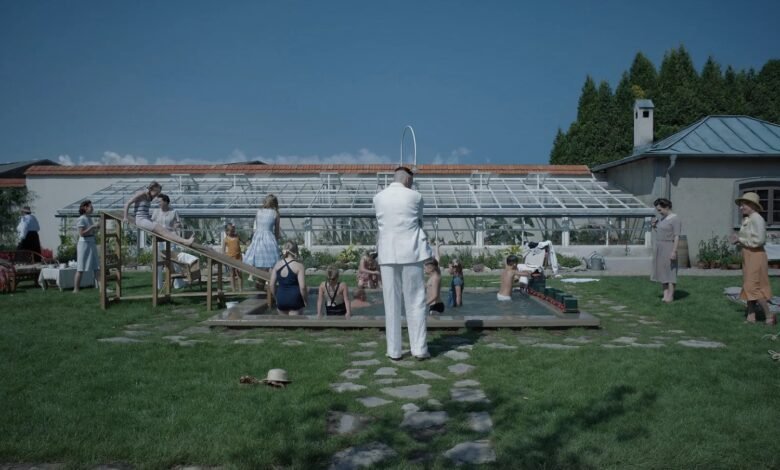

There are a few monotone moments, strangely ethereal night scenes. A girl, the movie’s only active resister, leaves apples for the starving prisoners. In daylight, we glimpse the dropped fruit, indicating that this is not a fairy tale. Glazer based this sequence on the testimony of a real life former junior member of the Polish resistance, whom we know only as Alexandria.
Mica Levi’s disturbing composition opens and closes the movie, but most of the sound in the film is diegetic; people’s daily chat, underscored with Johnnie Burn’s soundscape, an indistinct mix of rattling trains, shrieks and screams. The soundtrack conjures the cries of crushed human souls and trampled bones of the murdered victims. Their cremated ashes are tipped onto the soil by a Jewish prisoner, fertilising the earth to produce pretty plants for the Nazis.
Höss, who has also been fictionalised in the lamentable book and movie The Boy in the Striped Pyjamas, is seen riding horseback with his eldest son Klaus (Johann Karthaus). He swims in the river, until recoiling at human remains that float downstream. His children are forced out of the water, to be scrubbed by staff.
The servants are acquiescent local Polish women. Frau Höss scolds a housemaid, reminding her that she could be reduced to scattered ash. Another unfortunate woman services her boss. We see Höss clean himself assiduously afterwards and then pick up his child. Returning from duty at the camp, a worker must wash the blood from Höss’s boots. The fastidiousness of the mass-murderer.
Hedwig’s mother celebrates her daughter’s good fortune, but her sunbathing is spoiled by thick black smoke and she is troubled by views from the window. She leaves abruptly and Hedwig burns her goodbye note in the stove, as casually as her husband burned a million bodies.
Source link




